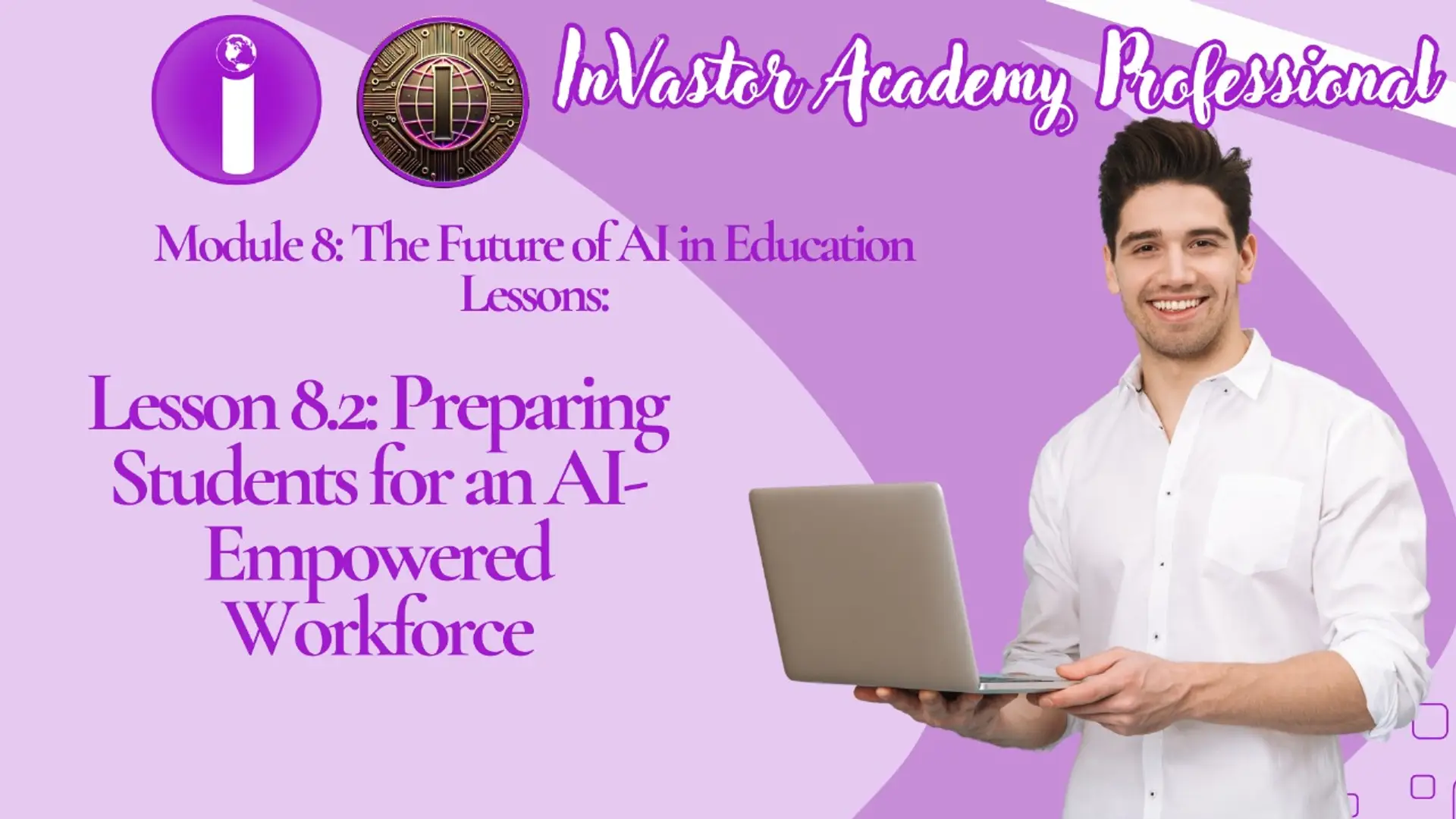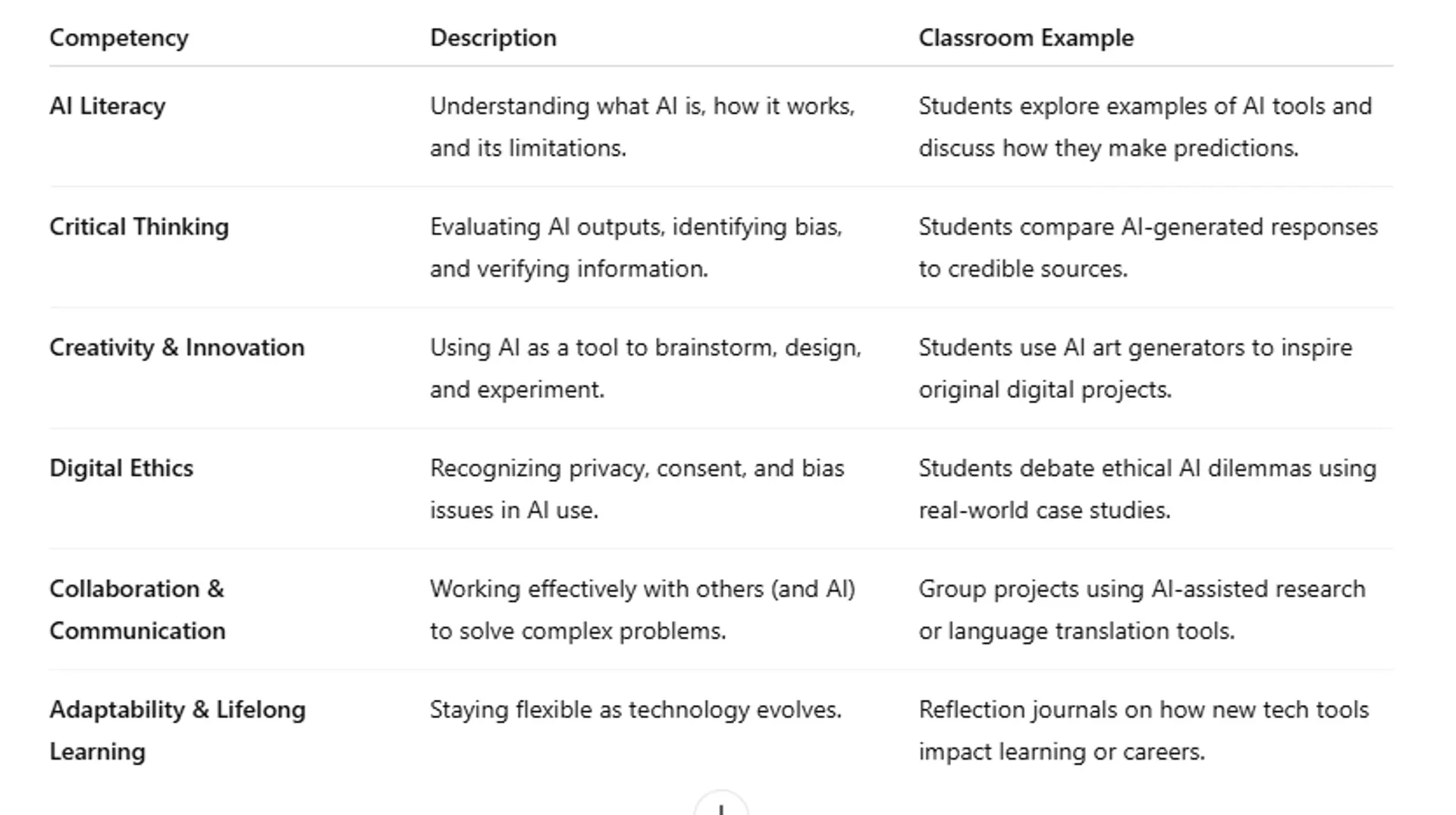

Module 8: The Future of AI in Education Lesson 8.2 — Preparing Students for an AI-Empowered Workforce
Module 8: The Future of AI in Education
Lesson 8.2 — Preparing Students for an AI-Empowered Workforce
Learning Objectives
By the end of this lesson, educators will be able to:
- Identify the essential skills students need to thrive in an AI-driven economy.
- Explain how AI is transforming the nature of work across industries.
- Integrate AI literacy and critical thinking into classroom instruction.
- Design learning experiences that promote creativity, ethics, and adaptability.
- Support equitable access to AI education and workforce readiness opportunities.
1. The Changing World of Work
AI is redefining what it means to be “career-ready.”
From healthcare and transportation to design, business, and agriculture, AI now assists in decision-making, automation, and problem-solving across almost every field.
While some jobs are being replaced or restructured, new opportunities are emerging in:
- AI development and ethics
- Data analytics and digital design
- Cybersecurity and privacy protection
- Human-AI collaboration and innovation
Key Insight:
The future workforce won’t just use AI — it will work with AI. Students must learn how to think critically, adapt creatively, and act ethically in partnership with intelligent systems.
2. Core Competencies for the AI-Empowered Workforce
Educators can help students build the following foundational competencies:

3. How AI Is Changing Career Landscapes
AI will not simply automate; it will augment human capabilities.
Here’s how it impacts key industries:

Takeaway:
Students must learn to leverage AI as a partner — enhancing their unique human strengths rather than competing with machines.
4. Teaching Strategies for Workforce Readiness
Educators can prepare students by embedding AI-readiness skills into existing curricula:
1.Project-Based Learning:
- Create real-world projects where students apply AI tools for research, design, or data analysis.
2.Career Exploration Modules:
- Invite guest speakers from AI-related industries or host virtual career panels.
3.Ethics in Action:
- Facilitate classroom debates about fairness, privacy, and bias in AI decision-making.
4.Interdisciplinary Learning:
- Connect AI concepts to science, math, social studies, and art to show real-world relevance.
5.AI Literacy Challenges:
- Have students critique AI-generated essays, images, or summaries — evaluating credibility and quality.
5.Promoting Equity in the AI Workforce Pipeline
Without intentional action, AI could widen existing inequities in access and opportunity.
Schools can help bridge the gap by:
- Ensuring equal access to AI tools and training for all students.
- Providing introductory AI and coding courses across grade levels.
- Partnering with local industries and universities for mentorship and internships.
- Encouraging diverse participation in AI fields (gender, ethnicity, ability).
- Teaching about bias, fairness, and inclusion within AI systems.
Equity Goal:
Every student — regardless of background — should see themselves as capable of shaping the future of AI.
6. Ethical Considerations for Workforce Preparation
As educators integrate AI into career readiness, emphasize:
- Transparency: Explain how AI decisions affect hiring or evaluation.
- Privacy: Protect student data in career simulation platforms.
- Accountability: Encourage reflection on human responsibility in AI-assisted work.
- Sustainability: Discuss environmental impacts of AI technologies.
7. Supplementary Resources
- How AI and Automation are changing the Nature of Work
- AI Literacy: Critical Thinking
- Empowering the Future: Ethical AI and Workforce Readiness in Education
Lesson 8.2 Quiz — Preparing Students for an AI-Empowered Workforce
Complete the quiz to check your understanding of policy development and ethical frameworks.
You must score at least 70% to pass.
Conclusion
Preparing students for an AI-empowered workforce means teaching them to be thoughtful creators, not passive users.
Educators play a key role in helping students:
- Understand how AI works.
- Think critically about its use.
- Collaborate ethically with intelligent systems.
- Adapt continually as technology evolves.
AI will change careers — but with the right guidance, students will change the world.
Next and Previous Lesson
Next Lesson: 8.3: Continuous Learning & AI Literacy for Educators
Previous Lesson: 8.1 — Future Trends (Adaptive AI, Emotion-Aware Learning, Autonomous Tutoring)
AI for Educators: Personalized Learning & Content Creation
Related Posts
© 2025 Invastor. All Rights Reserved

User Comments